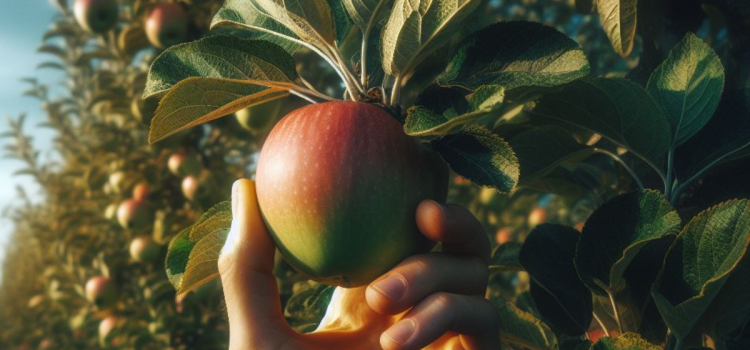
This is a free excerpt from one of Shortform’s Articles. We give you all the important information you need to know about current events and more.
Don't miss out on the whole story. Sign up for a free trial here .
How did the apple become one of America’s favorite fruits? Who first brought apples to the United States? Where did the idea of “apple picking” originate from?
There’s no fruit more quintessentially American than the apple. We snack on apples year-round, pick them at orchards each fall, and bake them into pies at Thanksgiving. However, their lack of genetic diversity may pose a problem in the near future.
Keep reading for a brief history of apples in America and the problems they face.
Why Do We Love Apples So Much?
Apples in America are extremely popular. We consume more apples than any other fruit, and American farmers produce more than 30 billion apples every year in widely beloved (or just begrudgingly tolerated) varieties such as Gala, Honeycrisp, Fuji, Granny Smith, and Red Delicious. But apple trees aren’t indigenous to North America, and apple pie wasn’t invented in the US.
How Did Apples Take Root in North America?
Many people think of apples as distinctly American, but the only apples native to North America are inedible crabapples. Botanists believe the domestic apple, Malus domestica, can trace its roots to Kazakhstan. Apples were carried by travelers along the Silk Road, cultivated by the Romans (who mastered the technique of grafting, or inserting a branch from one kind of tree into a cut in another tree’s trunk to control what kind of apple the tree produces), and carried by European colonists to North America. The colonists planted grafted apple trees, which didn’t thrive in their harsh new environment. So they began growing trees from seed instead.
Planting an apple seed yields an apple tree, but not one that bears the same kind of apple that produced the seed. Each time an apple seed is planted (or falls in the wild), a genetically unique variety is created. Everything in the tree’s environment affects the flavor, shape, color, and size of the apples the tree produces.
The colonists, even children, drank large quantities of alcoholic cider made from apples. As they spread across the landscape, apple trees became symbols of “civilization”—and of the dispossession and destruction of the indigenous communities on whose land they were planted. In the early 1800s, John Chapman, or “Johnny Appleseed,” planted apple orchards along the frontier in Ohio, Indiana, and Illinois. By doing so, he could claim the land and then sell it to European settlers striking out westward.
Why Is Apple-Picking a Fall Tradition?
If planting apple trees has become a beloved American tradition (and industry), so has reaping the fruits of that labor. The scientific progress of the late 19th and early 20th centuries gave rise to commercial orchards, which produced industrial quantities of fruit. Not long afterward, Americans began driving to orchards to go apple-picking each fall.
During the Great Depression, demand for US produce had plummeted and farmers were producing expensive surpluses. Many struggled to cover their expenses, including debt they’d taken on to expand their farms to meet wartime demand. Rather than lose money picking fruit, orchard owners tried something new. They advertised that tourists could pick apples themselves. The idea was a hit.
Most of the apples sold in the US are picked by hand. This grueling labor is often performed by migrant workers, who are recruited from Mexico with H-2A visas. These visas enable them to work for a few months—but only for the grower who hired them, no matter how poor the working or living conditions. The H-2 program has been compared to a modern form of slavery, and it’s a target for legislative reform.
What’s the Future of the American Apple?
The supply chains that carry apples from orchard to table have shaped the varieties of apples grown in the US. Many beloved apples, like the Red Delicious, were bred by chance in the 18th and 19th centuries. Some of today’s most popular varieties—such as Golden Delicious, Granny Smith, and McIntosh—were discovered over a century ago. During the time that’s elapsed, growers have cultivated vast orchards of grafted trees. This yields consistent apples, but reduces the fruits’ gene pool and makes the trees less resilient.
Scientists hope to develop new apples that might have more resilience against disease and insects, better resist harsh winters, and perhaps even have more flavor than today’s most popular varieties. But the process is long: Developing a new apple variety takes 15 to 17 years.

Want to fast-track your learning? With Shortform, you’ll gain insights you won't find anywhere else .
Here's what you’ll get when you sign up for Shortform :
- Complicated ideas explained in simple and concise ways
- Smart analysis that connects what you’re reading to other key concepts
- Writing with zero fluff because we know how important your time is






